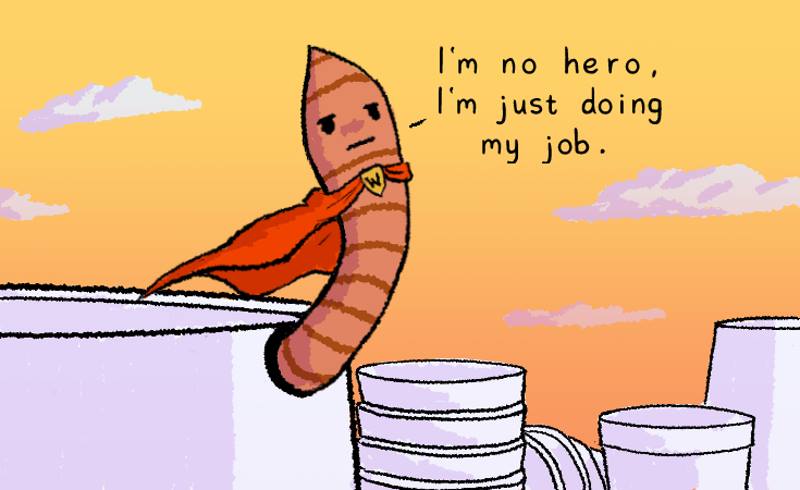If you were ever asked to find a relationship between worms and plastics you may laugh out loudly thinking what kind of mad question it is. Plastic with as annual production over 300 million metric tons has been one of the major non-biodegradable solid waste item, whereas the worms are delicate, soft bodied biological creatures that may often go unnoticed by the world. It seems to be quite impossible to find a interconnection between them. But what if the key to get rid of unwanted plastics lies in the stomachs of some hungry worms?
The researchers in Spain and England had recently discovered that the larvae of greater wax moth have the ability to degrade polyethylene. After several experiments scientists state that not only the chewing of larvae is responsible polyethylene degradation but also the enzymes from worms’ stomach have aided in the break down. This idea is evidently proved by traces of ethylene glycerol which is a product of polyethylene break down that signals the true bio degradation process.
Furthermore scientists explain that wax worms have the specific mechanism to break the simple carbon-carbon bond that exist in polyethylene through which the degradation process occur. Currently experiments are conducted to answer the question whether the responsible enzyme is produced by the worm itself or by it’s gut bacteria. Based on the possibility of harnessing that enzyme, scientists predict that a sustainable solution can be provided for tons of accumulated plastic waste.
After all these scientific explanations I think it’s pretty amazing the way our mother nature has kept keys of solution for huge impacts in most hidden and unnoticeable places. All we have to do is to search them and unlock.
Story credits: https://www.

